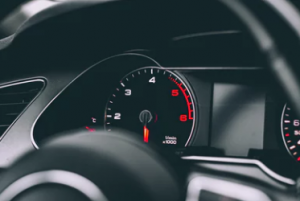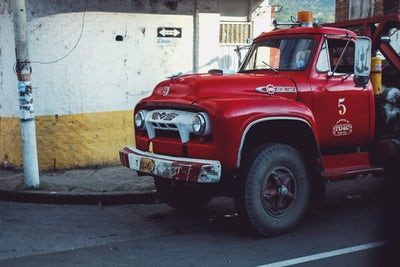International vehicle transportation guidelines
Moving a vehicle across several countries is extremely difficult. That goes without saying. What you should also know is that the most difficult part of international vehicle transportation is not moving the vehicle itself – it’s dealing with rules, relocations, and guidelines. So, what’s the trick?
It’s best not to move it alone
While doable, it is not a good idea to move the vehicle by yourself. First and foremost, you’re (probably) not a relocation expert. Second, you are not (probably, again) a legal expert on international vehicle transportation. An agency or a reliable global moving company Brazil will do a much better, efficient and much more inexpensive job. After all, it’s their profession.
What are the risks of international vehicle transportation?
They are many. Although your pickup may look durable and rugged, in reality, it has many sensitive components. Some of those are:
- Double-mass flywheel – it’s located on the bottom of the engine. The springs inside can easily break and the repair is expensive. They are commonly found on diesel cars and trucks;
- The suspension springs – some of them are stronger than others, while others are strong but still breakable. For example, Mercedes E-class springs are notoriously strong, but have many more components than, say, Peugeot;
- The turbocharger – turbochargers are sensitive to many forms of damage. Repairs do not come cheap.
There are countless other components and other things that could go horribly wrong. Still, that vehicle needs to be transported.

Before your international vehicle transportation, you should have all the vehicle components checked.
What is to be done?
Well, for starters, you need to make sure that your vehicle is in the same state the moment it leaves country A and enters country B. For that, you need to do not only a routine checkup but much more. You need to do the following check:
- Charge the car battery (accumulator) to the fullest;
- Leave it in idle mode until the fuel level reaches the bare minimum – this is for safety reasons;
- Deactivate any alarms and other security systems – the rocking of the boat will fire them off, draining the car battery;
- Replace the coolant liquid. If you’re, for example, moving to a different climate, such as a trip from Brazil to Alaska, make sure you put the appropriate coolant. Failure to observe this security measure will lead to engine breakdown;
- Last, but not least, have everything checked – the engine, the suspension, the cooling system- in other words, everything.
The procedure of importation
Let’s say you’re importing a car into Brazil. Of course, you have to deal with lots of regulations. For example, you may not import a car that is over 30 years old, unless it’s a diplomatic car, donated car, or inheritance. It’s best to ask your long distance moving companies Brazil because there probably is a loophole for your ’74 Dodge Monaco that you just don’t want to part ways with.

All the mechanical and electronic components on your vehicle should be thoroughly checked.
You’ll need an import authorization
You see, this is where all the bureaucratic “fun” starts. You will have to give your personal data and the data of your vehicle. Nothing wrong with that. You will, however, have to report your income, and the Brazilian import authorities have every right to deny your car entry into Brazil if they find the value of the car incompatible with your recent financial reports. If you’re currently working a low-end job and driving a Mercedes that is a gift from your dad, you may be deterred.
You’ll also need to meet emission standards for international vehicle transportation
Yap. In order to import a vehicle into Brazil, you will need to make sure that your vehicle is compliant with emission standards PROCONVE 6. That’s somewhat akin to Euro 5. Roughly speaking, these are vehicles produced between 2008 and 2012. So, what can be done about it?
- The most obvious answer that comes to mind is engine replacement. If you say, have a 1956 Chevrolet Bel-Air with 90horsepower in a giant, V8 engine, you can have it replaced with a modern turbocharged low-displacement petrol engine with low emissions;
- Add a catalytic converter – a catalytic converter will turn all those poisonous fumes into air od carbon-dioxide. It will also increase your fuel efficiency, so why not?;
- Buy another car. If it’s Euro4, add a catalytic converter. If it’s Euro5, you’re good to go. In some cases, this could be the only way to do an international vehicle transportation.
You will have to deal with additional costs

It’s sometimes very difficult to do an international vehicle transportation – especially in the case of vintage cars.
Even with all the regulations in place, people still manage to import many vehicles into countries such as Brazil. Generally speaking, when it comes to international moving to Brazil and other countries have very stringent import rules. However, even if you get by them, you will still have to pay prices that are sometimes exorbitant. We are talking about stuff such as import taxes and checkup costs.
So, what is for you to do? Well, you can, as we mentioned, either do it yourself or contact a reliable moving company. Either way, it’s a long, arduous process. However, by calling a good moving company you can save precious time and valuable money. That being said, these general guidelines will hopefully get you through the whole process.
This guide also doesn’t apply to certain countries. Different countries have different laws on vehicle importation and some are much flexible than others. A single person cannot know all the import laws in the world. For that reason, you should contact a group of reliable movers to avoid this trouble altogether. After you wait a little bit in your new destination, your vehicle will be ready for use!




